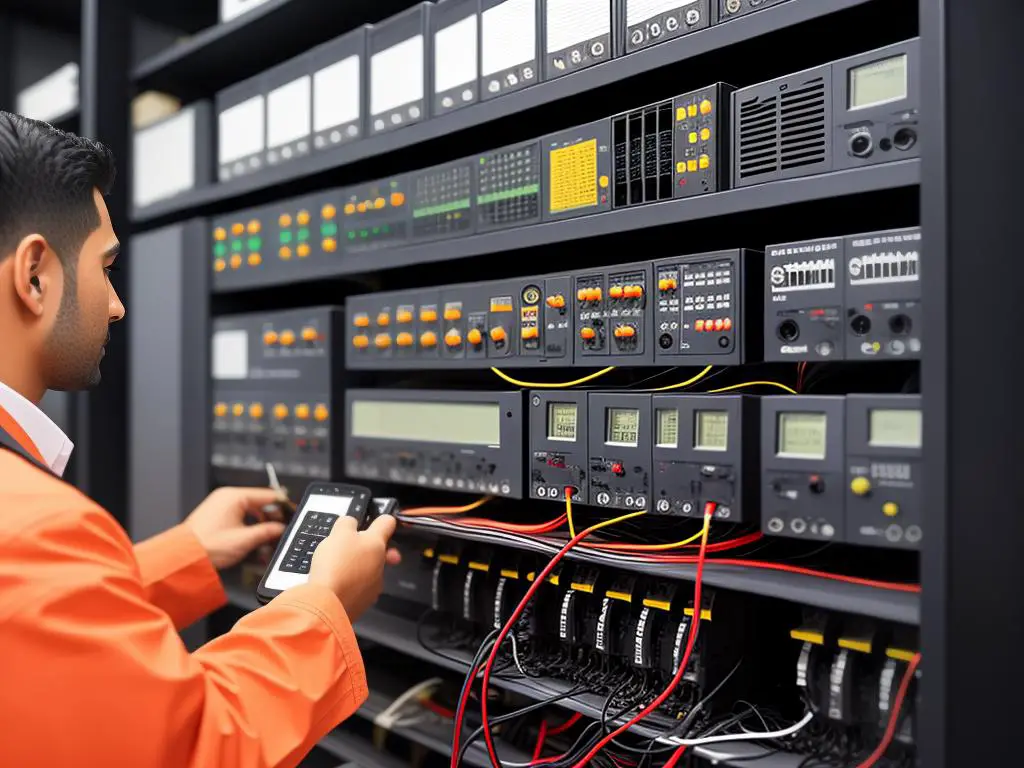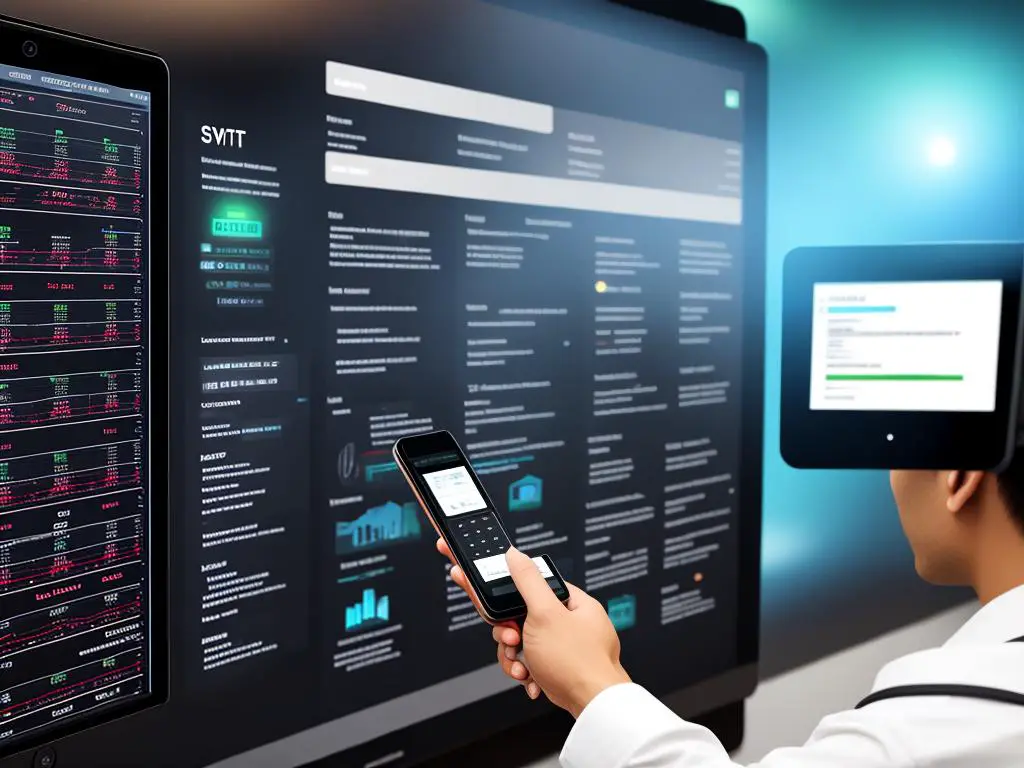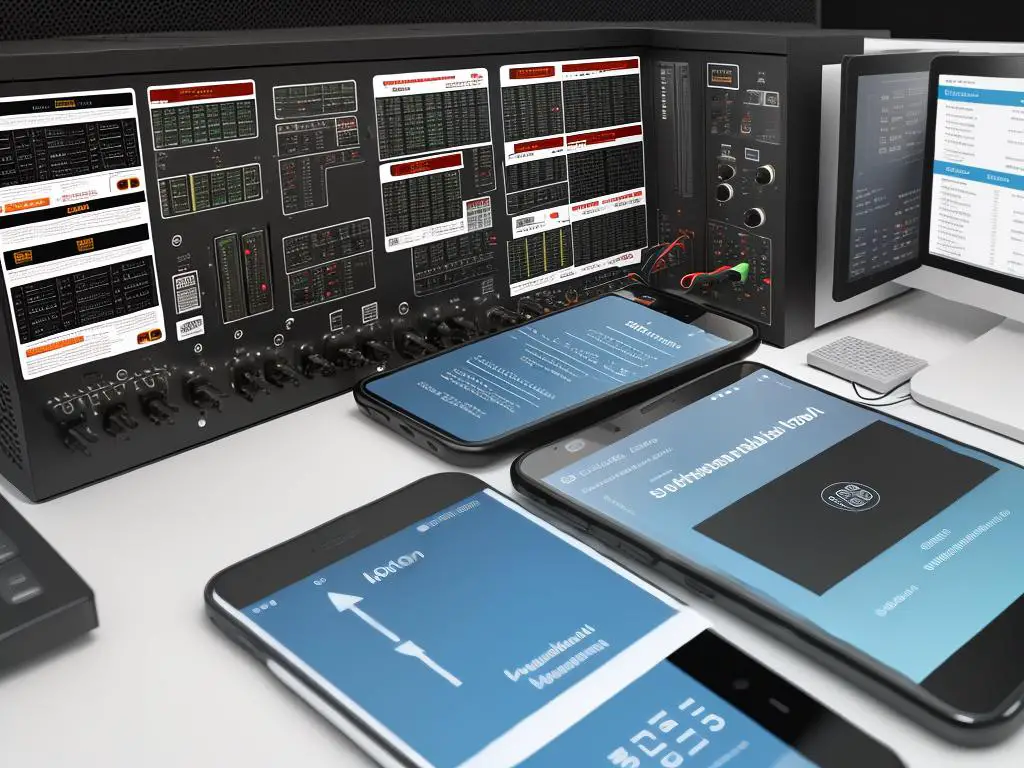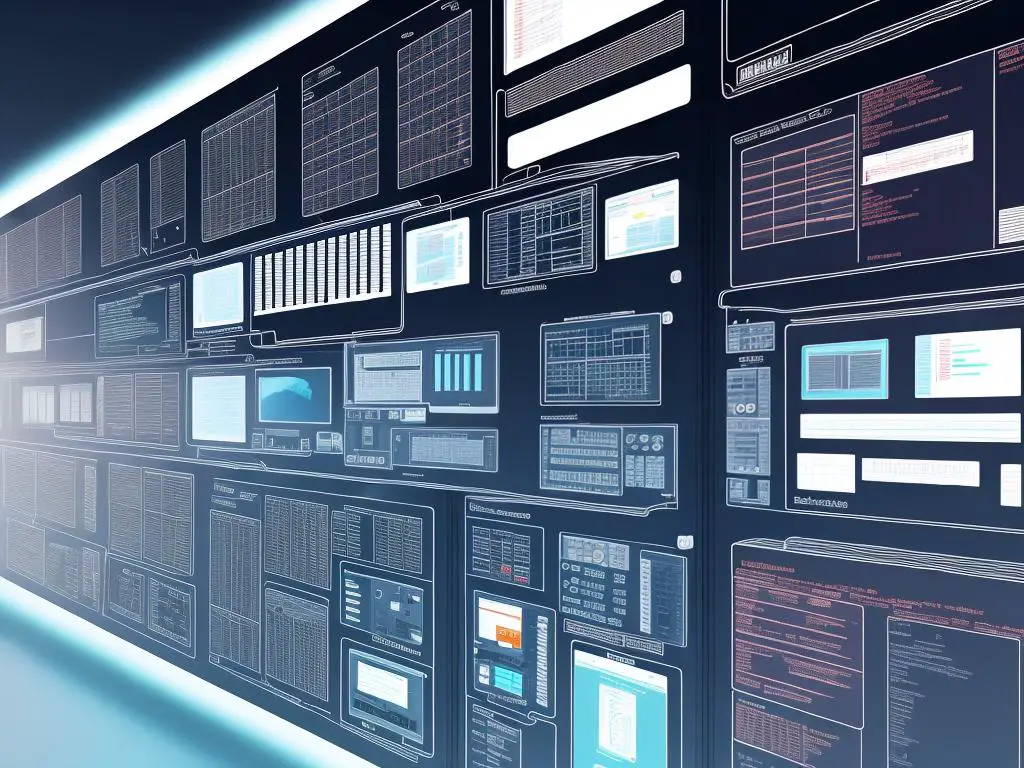Understanding Substation Automation & IoT Concepts, Delving into the intersection of technology and electricity, we embark on a fascinating journey through the world of substation automation and the Internet of Things (IoT). In the modern digital age, innovations are weaving an intricate network where physical objects can interact with each other, and software applications to exchange data and react according to pre-set protocols.
Substation automation, an integral part of smart grid technologies, and IoT usher an era where transformers, circuit breakers, and other substation components are being designed to communicate and operate intelligently. In the forthcoming segments, we will demystify substation automation, introduce the concept of IoT, explore their convergence, examine potential challenges, and envisage the future of these combined technologies.
What is substation automation?
Understanding Substation Automation: The Basics
Substation automation refers to using a system of software and hardware arrangements to monitor and control power system elements from a remote location. The term “substation automation” emerged in relation to systems that aid in the collection and analysis of real-time data, enhance operational functionality, improve power system reliability, and optimize asset management.
Enhancing Efficiency and Safety: The Power of HMI Software
This concept sits at the nexus of electrical engineering and computer science, utilizing elements from both domains to create a seamless, efficient, and safe electrical power substation. The linchpin of a smart grid, substation automation is the brain behind the operations, controlling, and monitoring systems without any human intervention.
Substation automation, in essence, is a system of interlocked intelligent electronic devices (IEDs), including protective relays, controllers, switches, and circuit breakers, connected to a network. These devices perform key functions such as measurement, control, monitoring, diagnostics, and communications within the substation environment. This enables critical real-time data to be collected and analyzed to make quick decisions regarding grid functioning.
The Importance of Substation Automation
Substation automation is a critical component of modern power distribution systems. With the increasing complexity and interconnectivity of electrical networks, the need for efficient and reliable automation solutions has become more evident than ever.
One of the key benefits of substation automation is improved operational efficiency. By automating various processes and tasks, such as fault detection, isolation, and restoration, substations can operate more efficiently and respond quickly to any issues that may arise. This ultimately leads to a more reliable power supply and reduces downtime for consumers.
Another advantage of substation automation is enhanced monitoring and control capabilities. Through the use of advanced sensing and monitoring technologies, operators can collect real-time data on various parameters, such as voltage levels, current flows, and equipment status. This data enables them to make informed decisions, identify potential problems, and take corrective actions promptly.
Read Also: Function Substation Automation System
The Role of IoT in Substation Automation
The Internet of Things (IoT) is a revolutionary concept that has transformed various industries; the power sector is no different. IoT-based devices help collect, analyze and transmit valuable data from substations to a centralized location in real-time, thereby enabling quicker decision-making.
The inclusion of IoT in substation automation has paved the way for more advanced and efficient systems. IoT-based sensors equipped on substation devices provide real-time data related to voltage levels, current flow, temperature readings, and more. This data is then processed, analyzed, and actions are taken such as tripping a breaker or adjusting voltage levels, contributing to the effective functioning of the power grid.
IoT has redefined predictive maintenance within substations. Instead of scheduled field visits, continuous real-time condition monitoring enables potential faults to be detected before they lead to bigger setbacks, minimizing downtime, reducing maintenance costs, and ultimately improving grid reliability and efficiency.
Introduction
Substation automation, greatly aided by the Internet of Things (IoT), has evolved over time from a simplistic remote control system to a fully interfaced, technologically advanced, proactive control system. This fast-growing field offers the potential to significantly transform the energy sector by improving operational efficiency and paving the way for smarter and more environmentally friendly grid systems.

Understanding the Internet of Things (IoT)
Exploring the Internet of Things (IoT): How it Works and What it Does
One of the technologies spearheading this transformation is the Internet of Things (IoT), which is going beyond expectations across various industries. The IoT represents a network of digital devices interconnected and capable of internet connectivity, which facilitates information communication amongst the devices themselves and with humans. IoT devices vary greatly, extending from daily use items like refrigerators or doorbells to sophisticated industrial machinery.
In essence, IoT devices are usually equipped with software or sensors that allow data collection and exchange. This captured data is typically transmitted to a centralized system where it’s analyzed and decoded into valuable insights. These insights can enhance efficiency, enable effective monitoring, and aid informed decision-making. This versatility has seen IoT find relevance in various sectors including industrial automation, healthcare, agriculture, energy, and transportation to name a few.
IoT in Substation Automation
One of the sectors where IoT has made significant strides is in power utility, more specifically, Substation Automation. A substation is a critical part of any electrical generation, transmission, and distribution system. It helps transform voltage levels and facilitate the smooth and efficient transmission of electricity over long distances.
Substations were primarily manual in the past, demanding labor-intensive monitoring and maintenance. However, with the advent of IoT, substations are becoming increasingly automated. IoT facilitates the integration of various intelligent electronic devices (IEDs) in substations, enabling remote monitoring, control, and protection of the utilities involved.
Advantages of Incorporating IoT into Substation Automation
The integration of IoT into substation automation comes with numerous advantages. Firstly, IoT can lead to significant cost savings in maintenance. Instead of having regular maintenance schedules, IoT-enabled devices can report their status in real-time, allowing maintenance to be performed just when it’s needed.
Secondly, IoT enhances the operational efficiency of the substations. By providing real-time data about system performance, operators can make timely decisions, hence preventing possible faults and enhancing the life and reliability of the components.
Thirdly, IoT-enabled substation automation systems allow for seamless integration of renewable energy sources into the grid. These systems are capable of managing the variability and decentralization of renewable sources with their enhanced control capabilities.
Lastly, in the case of any faults or power outages, IoT systems are programmed to generate instant alerts with details about the fault’s location and nature. This makes it easier for the utility companies to quickly identify the issue and reduce the restoration time.
Embracing the Future: Substation Automation and IoT
Integration of the Internet of Things (IoT) into substation automation presents challenges, particularly in ensuring data security and maintaining privacy. Yet, thanks to the ever-advancing technology and implementation of stringent preventive measures, these potential risks are being steadily managed.
As we look towards a future where smart grids will likely become the norm, the role of IoT in substation automation is anticipated to expand. As this transition to a further digitized era takes place, the interaction between IoT and substation equipment will continue to refine, resulting in a power system that is more reliable, efficient, and resilient.

How does IoT apply to substation automation?
Powering Up Efficiency: The Integration of Substation Automation and IoT
Substation automation plays a crucial role in electrical power systems, improving reliability, efficiency, and safety. It is primarily responsible for managing several intricate processes such as real-time monitoring, control, relay, protection, and communication. With the advent of the Internet of Things (IoT), which enables physical devices to collect and exchange data through a connected network, these functions are further enhanced and streamlined.
Enhancing Efficiency and Safety: The Power of HMI Software
When combined with IoT, an automated substation can operate even more efficiently and reliably, contributing to a higher level of safety and leading to a more sustainable, economical distribution of electricity.
Revolutionizing Substation Operations with IoT Applications
The application of IoT in substation automation has numerous benefits. It allows for more accurate monitoring and controlling of substations by facilitating data exchange between multiple devices, allowing for quicker identification and resolution of faults. It improves system reliability by providing real-time information about equipment status and performance patterns, enabling earlier detection of potential issues. Lastly, it fosters safer maintenance operations by allowing remote control and monitoring, hence reducing the need for personnel at hazardous locations.
Smart sensors incorporated into the IoT infrastructure can track voltage, currents, and temperature for the substation’s remote terminal units (RTUs). These sensors collect data and send it back to a central server through their wireless network. This type of system enables electricity supply companies to monitor their substations remotely, identifying potential issues before they become major problems.
Real-world Applications of IoT in Substation Automation
Several practical applications demonstrate the successful integration of IoT with substation automation. In advanced power grids, IoT-enabled devices can collect data from various locations, consolidate it, and send it to a central location for further analysis. This method reduces the risk of unexpected equipment failure, lowers maintenance costs, and promotes efficient use of resources.
Distribution automation devices like automated meter-reading (AMR) systems also use IoT technology. These systems measure electric energy consumption, detect abnormalities (like a power outage or theft), and transmit this data remotely to the utility company. They can also allow the rapid isolation of faults on the distribution network, restore power quickly, and reduce outage times.
The marriage of the Internet of Things (IoT) with substation automation is dramatically reshaping the landscape of power generation, transmission, and distribution. This blend of technologies makes it possible to gather wide-ranging data which can be used to optimize various processes involved in power system operation and its maintenance. As time goes on, the synergy of IoT and substation automation will continue to propel advancements not just in electrical power systems, but also in the wider energy sector.

Challenges and solutions of implementing IoT in substation automation
Obstacles in Incorporating IoT in Substation Automation
Despite the many benefits, integrating IoT technology into substation automation is not without its sets of hurdles. These span across different areas such as cost implications, compatibility issues, and concerns over security risks, among others.
Potential Solutions for Implementing IoT into Substation Automation
Despite the numerous challenges, viable solutions exist for successful implementation of IoT in substation automation.
The Cost Challenge
The cost of implementing IoT in substations is substantial. Major financial investments are required for the purchase of IoT devices, software and services, maintenance, and employee training. Moreover, the rapid advancement of technology necessitates constant upgrades, which can be financially taxing for many companies.
To tackle the high cost of implementing IoT, careful financial planning is required. Companies can plan for phased implementation, where the implementation is done gradually over a period of time. This approach minimizes the impact of costs, as instead of a lump sum, investments are spread out over time. Additionally, it is important to prioritize investments on the most necessary IoT devices and applications.
The Compatibility Concern
Compatibility remains a major concern when integrating IoT in substation automation. Often, the IoT devices and applications utilized in substations are not compatible with each other or with the existing infrastructure of the substation. This results in disjointed operations and hampers the realization of the full benefits of IoT technology.
Compatibility can be ensured through the standardization of IoT devices and applications. Organizations such as the Institute of Electrical and Electronics Engineers (IEEE) have set out standards for IoT devices. Adherence to such standards ensures compatibility and interoperability between IoT devices applied in substations.
The Security Risk
The issue of security risks, particularly cyber-attacks, cannot be overstated. The introduction of IoT devices in substations expands the attack vector, thus making substations more susceptible to risks such as unauthorized access, information theft, and crippling of the substation’s operation.
Cybersecurity risks can be mitigated by adopting robust security measures. Adequate and up-to-date data encryption methods should be utilized to ensure the security of operational and nonoperational data. Regular security audits and intrusion detection systems can also be used to identify and fend off cyber threats.
Employee Training
Moreover, employee training should be prioritized to ensure the staff are adept at handling IoT systems. Well-trained employees will be more equipped to detect anomalies and be more effective in maintaining optimal operations of the substation.
Conclusion
Summing up, it’s clear that while there may be potential trials and security risks associated with implementing IoT in substation automation, these issues can be effectively handled through strategic planning, standardization, robust cybersecurity strategies, and thorough staff training. The ultimate objective is the enhancement of efficiency, reliability, and overall effectiveness within power generation, transmission, and distribution systems.

The future of substation automation with IoT
A Brief Look Into Understanding Substation Automation and IoT
Substation automation plays a critical role within power systems’ transmission and distribution processes. This method integrates a variety of intelligent electronic devices (IEDs), automation technologies, and communication networks into a power substation. The aim of this integration is to allow for detailed monitoring, controlling, and protective measures over the substation’s electrical equipment.
Simultaneously, the Internet of Things (IoT) is a technology that allows physical devices, vehicles, home appliances, and more to connect and communicate. This networking happens through embedded sensors, software, or connectivity, making remote monitoring and control possible.
The fusion of substation automation and IoT is designed to not only boost efficiency and reduce operational costs but also optimize asset utilization. Furthermore, it seeks to enhance the system’s reliability and security within the power sector.
Emerging Trends in Substation Automation and IoT
One emerging trend in the substation automation and IoT space is the adoption of wireless technology. Given the vast amounts of data that need to be exchanged between devices, wireless technology is considered a cost-effective and efficient solution. It allows the transmission of real-time data from a substation with minimal delay and less complexity in the transmission infrastructure.
Another trend is the growing use of artificial intelligence (AI) and machine learning (ML) in substation automation systems. These advanced technologies are being used to analyze and interpret data, predict equipment failures, and enhance system reliability and efficiency.
Ongoing Research in Substation Automation and IoT
Research in this field is focused on improving and advancing the communication network architecture and developing new intelligent electronic devices (IEDs), automation technologies, and software. For instance, researchers are looking into fully integrated, robust, and secure communication networks that could withstand heavy data traffic, weather conditions, and security threats.
There is also ongoing research into developing new IEDs that are more efficient, reliable, and can communicate effectively with other devices. This includes advanced protection relays, power quality equipment, and fault detection devices.
The Future of Substation Automation and IoT
The future of substation automation and IoT looks promising with several expected advancements. One significant development is the integration of renewable energy resources. With the growing importance of renewable energy, future substations will likely be equipped with automation systems and IoT devices that can handle the dynamics and intermittency of renewable energy sources.
Furthermore, the future holds a highly automated and digitized substation environment, where all equipment will be connected, and operations will be remotely controlled.
Advanced cyber-security measures are an essential aspect of the future of substation automation and IoT. Given the increasing frequency of cyber-attacks and the rising interconnectivity between devices, techniques will need to be developed to secure not only the data but also the entire substation automation system.
Overall, the future of substation automation and IoT paints a picture of a highly efficient, reliable, secure, and sustainable power grid system. This technological revolution in the power sector is set to change the way we generate, distribute, and consume electricity.

As we navigate through the realms of technological advancements, it becomes evident that the fusion of substation automation and the Internet of Things is not a mere possibility, but a transformative reality. While the journey confronts us with various challenges related to cost, compatibility, and security, the dynamic and adaptive nature of technology itself offers novel solutions. As we continue to enhance the intelligence of substations with IoT, we move towards a future where electrical systems are more reliable, efficient, and ultimately, more in tune with the evolving digital world. Subsequently, we uncover a shift in perspective, from viewing these technologies as standalone entities, to an intertwined net of innovation waiting to be fully explored and realized.
Discover more from Sugeng Riyanto
Subscribe to get the latest posts to your email.